When platelet-rich plasma, or PRP, first came onto the scene, it was used primarily by oral surgeons in dental implant surgery and orthopedic surgeons in sports medicine due to its unprecedented regenerative capabilities. Upon recognizing its potential in rejuvenation procedures, in 2008, Prasad Cosmetic Surgery became one of the first practices to apply PRP for cosmetic treatments.
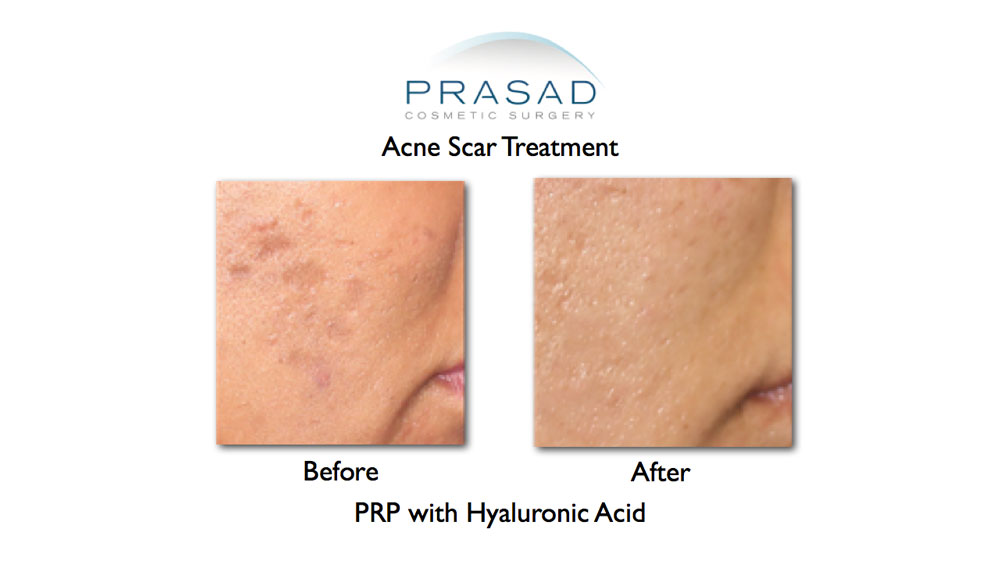
The regenerative quality and potential of PRP led Dr. Prasad to become one of its earliest advocates for skin rejuvenation and cosmetic medicine in 2008.
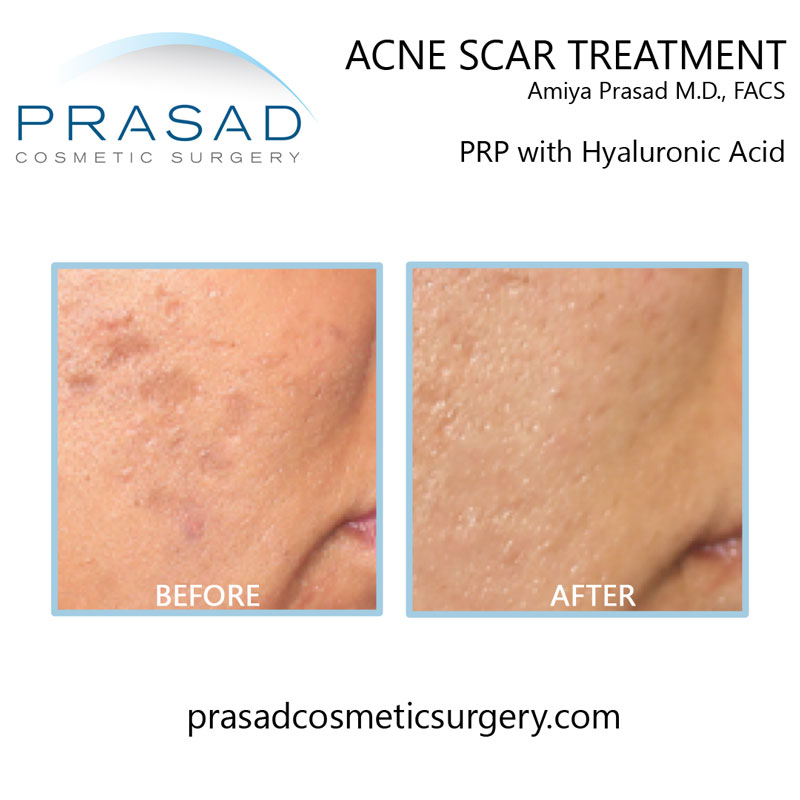
The regenerative quality and potential of PRP led Dr. Prasad to become one of its earliest advocates for skin rejuvenation and cosmetic medicine in 2008.
PRP is the concentration of one’s own blood plasma that contains several vascular growth factors that help with healing when we have mild injuries such as cuts. PRP is known to stimulate collagen production and improve blood supply in areas where it is applied, therefore Dr. Prasad saw potential in developing our own customized strategies to help patients with skin issues such as fine lines, wrinkles, dark circles, and acne scars.
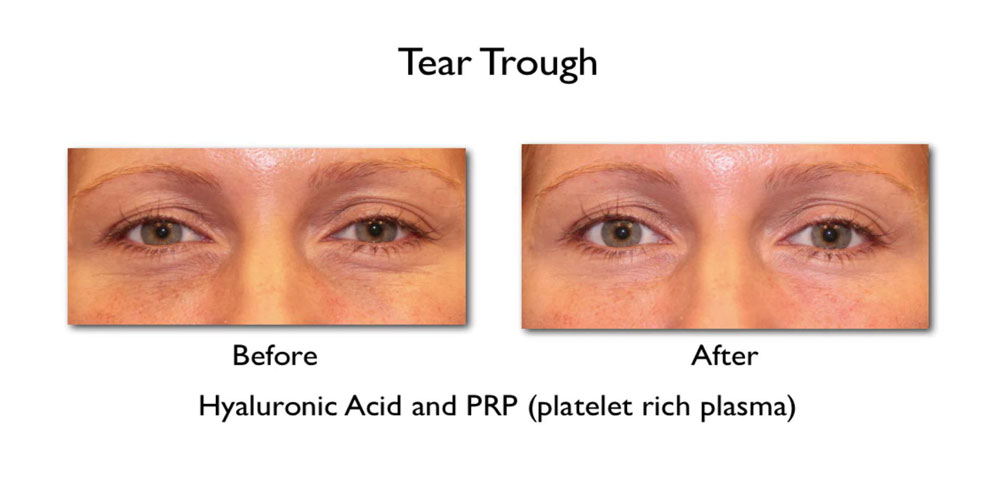
PRP is the longstanding go-to treatment for under eye dark circles in Prasad Cosmetic Surgery
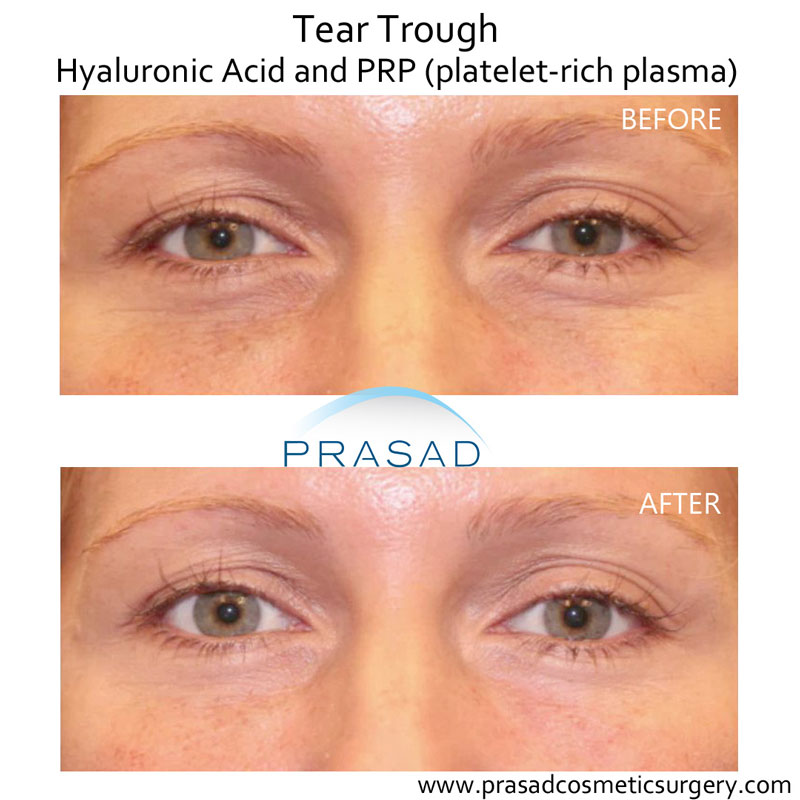
PRP is the longstanding go-to treatment for under eye dark circles in Prasad Cosmetic Surgery
PRP for Skin Rejuvenation and Improved Healing
Initially, the interest in PRP was quite low, possibly due to the lack of aggressive, widespread marketing led by large-cap companies responsible for the push towards trendy lasers and treatments. Simply put, centrifuges and the fact that the main ‘ingredient’ in the treatment could be derived from the patient themselves was not lucrative for big companies in the field of aesthetics. Dr. Prasad recognized the promise of PRP as a material that can increase collagen production, improve blood supply, and expedite healing, and we saw this as a safe and effective means to rejuvenate skin to make it look more vibrant and youthful.
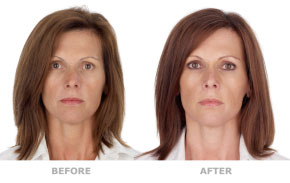
Images courtesy of Selphyl
PRP boosts skin so that you can look youthful and refreshed without surgery or downtime.
PRP in Eyelid Surgery and Other Combination Treatments
After adopting PRP as part of our routine treatment for cosmetic skin issues, we began to apply it to surgical procedures performed on areas where the skin was most delicate. Eyelid skin, for example, is only 0.5mm thick, thus making it the area where the skin is at its thinnest and most delicate. We’ve found that applying PRP to these areas after surgery significantly improved the skin’s rate of healing, as well as the overall skin quality. Its effect of improving blood supply and stimulating collagen also improved the appearance of dark under eye circles. To this day, we consistently use PRP to improve the quality, thickness, and appearance of upper and lower eyelid skin.
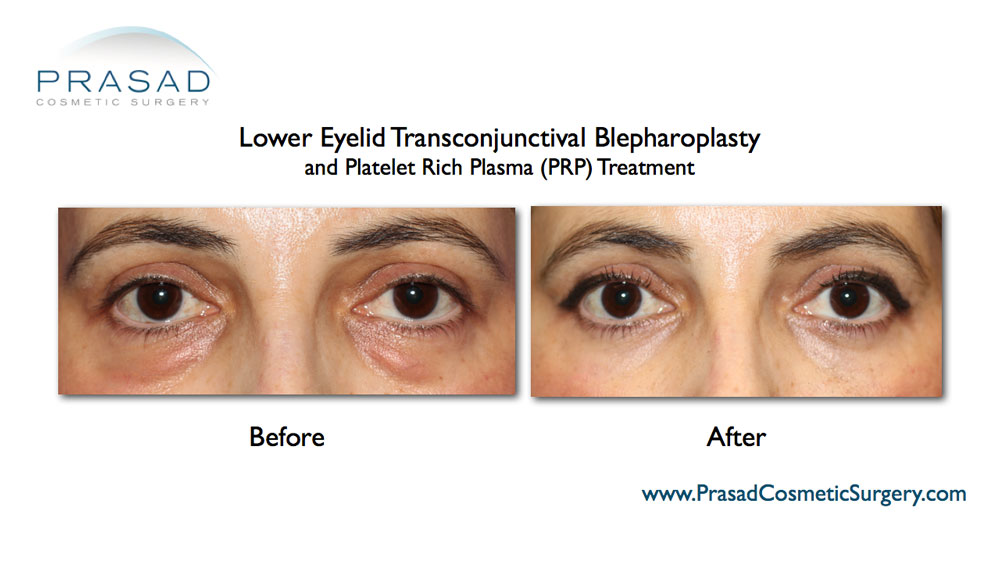
Skin quality and healing after upper and lower eyelid surgery can be improved with the help of PRP.
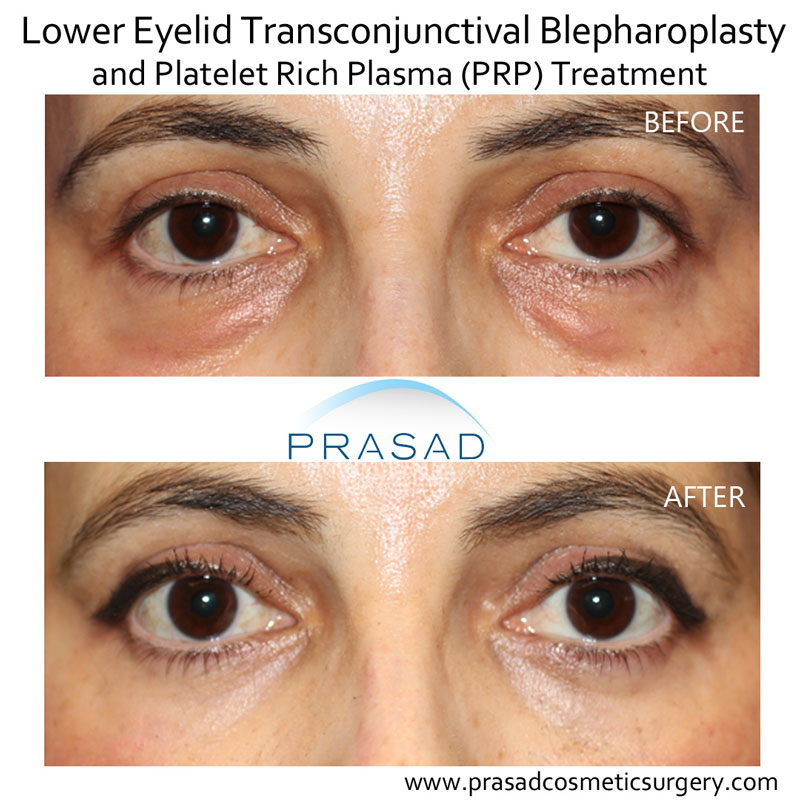
Skin quality and healing after upper and lower eyelid surgery can be improved with the help of PRP.
In our practice, we combine PRP with other treatments to maximize the benefit and outcome. For example, we regularly combine PRP with a syringe of hyaluronic acid filler, such as Juvederm or Restylane, in a treatment known as the Vampire Facelift®, which was created by Dr. Charles Runels. Incidentally, Dr. Prasad was personally trained by Dr. Runels in the Vampire Facelift® procedure, and is a longstanding member of the official Vampire Facelift® Network of doctors. The combination of PRP and hyaluronic acid in the Vampire Facelift® adds volume and an outward lift to tired, dull skin, and is ideal for patients in their 30s and 40s looking for a facial glow not possible with other treatment. The PRP and hyaluronic acid filler combination can also be used to improve the appearance of hollow tear troughs and dark circles under the eyes.
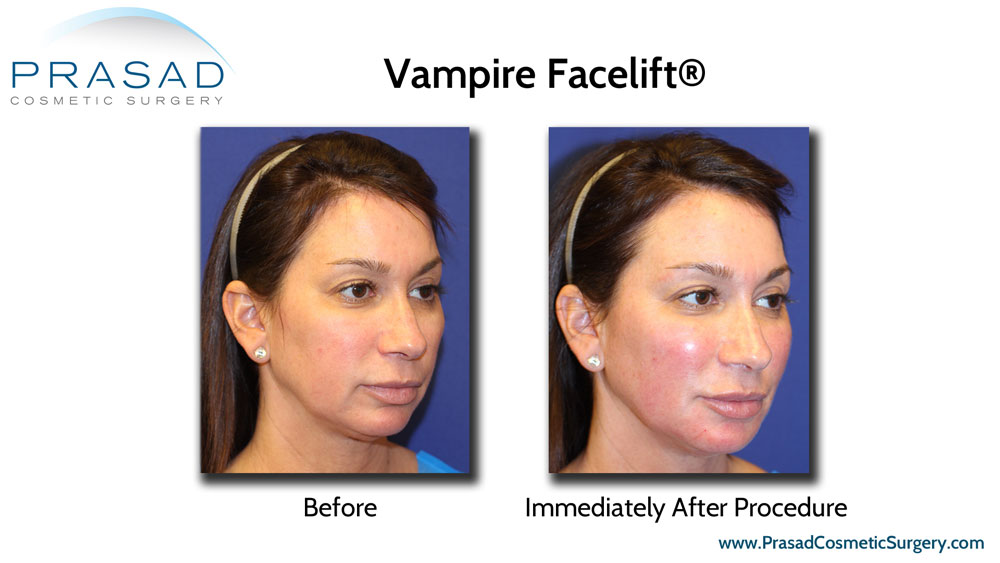
Combining PRP with other modalities such as filler can improve results of other cosmetic treatments.
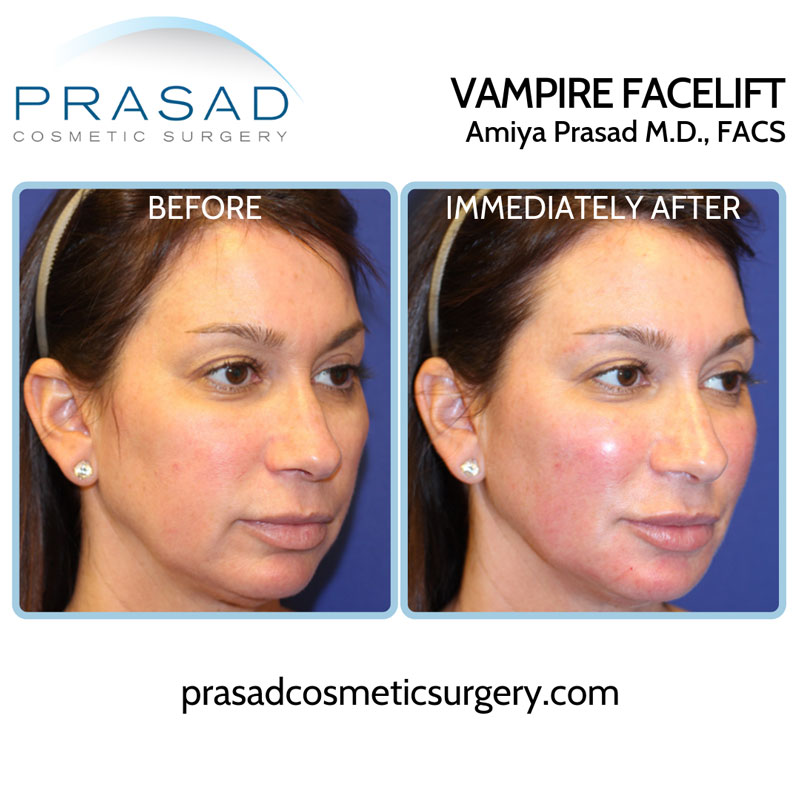
Combining PRP with other modalities such as filler can improve results of other cosmetic treatments.
A Background on ACell Prior to its Use in Hair Loss Treatment
The term “ACell” actually refers to the name of the company that manufactures several wound healing and regenerative products using the material acellular or extracellular matrix (ECM). Much in the same way that the name “Kleenex” is used for tissues or “Q-tip” for cotton swabs, “ACell” has become a common term for variations of extracellular or acellular matrix.
Some of the earliest uses for acellular matrix were seen in the military and in veterinary medicine. Outside of that, there was little knowledge or experience with it in cosmetic and plastic reconstructive surgery. We eventually became one of the first practices to use acellular matrix in surgery during a time when many of our colleagues had only begun to hear about it.
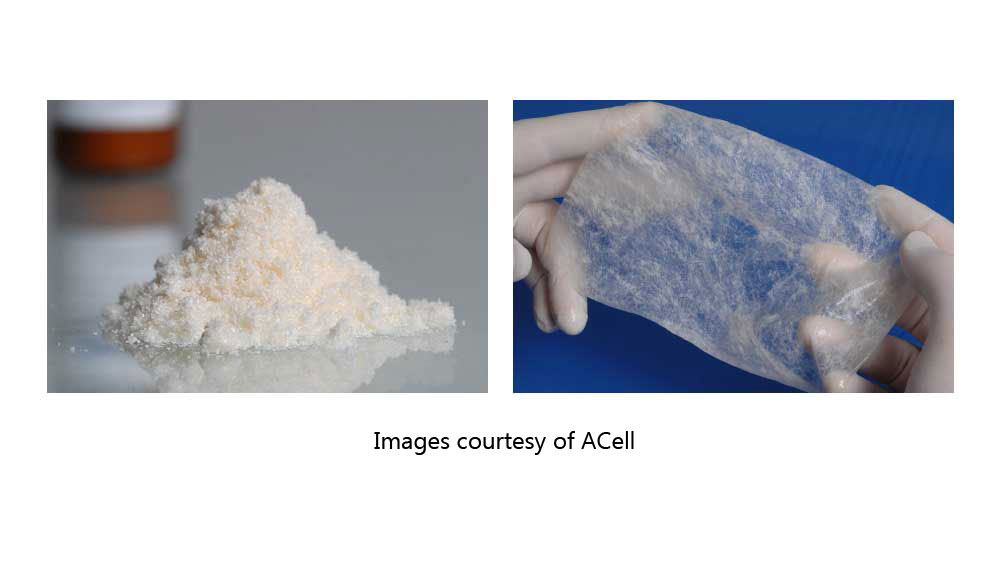
Extracellular matrix, or acellular matrix, by ACell in powder or sheet form is a little harder to dose appropriately than pharmaceuticals
Acellular matrix is a material that comes from pig bladder because of its unmatched ability to regenerate itself, and is used for enhanced wound healing as it stimulates the production of one’s own natural stem cells. Unlike other modalities that come in fluid form, acellular matrix comes in powder and sheet form, which made it a bit more difficult to dose in comparison to conventional pharmaceuticals.
ACell for Regenerative Medicine
Acellular matrix gained notoriety by using the body’s stem cells to help regenerate tissue for wounds and other mild injuries. One of the most outstanding demonstrations of its capabilities was when it was used to completely restore an amputated fingertip after an accident. Everything from the skin, bone, muscle tissue, and even the fingernail were regenerated. This type of tissue regeneration is unprecedented, so Dr. Prasad saw the great potential of advanced regenerative wound healing abilities in cosmetic surgery.
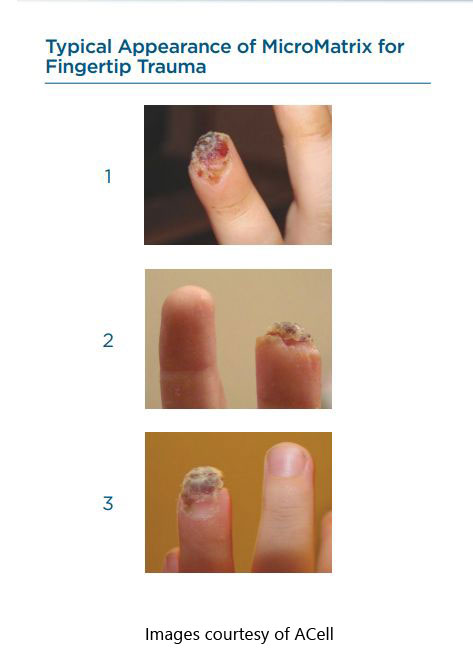
The ability to regenerate lost fingertip tissue helped acellular matrix by ACell gain notoriety.
Prasad Cosmetic Surgery began using acellular matrix for incision healing in surgical procedures, and any other procedures that require tissue regeneration. For example, we developed a formulation using acellular matrix and PRP that we use when performing facelift surgery. This formulation greatly improved the healing of facelift incisions to the point where one month post-surgery, the incisions are almost imperceptible. Areas of the face affected by tissue loss due to skin cancer, such as the nose and ears, are also able to regenerate new tissue thanks to acellular matrix.
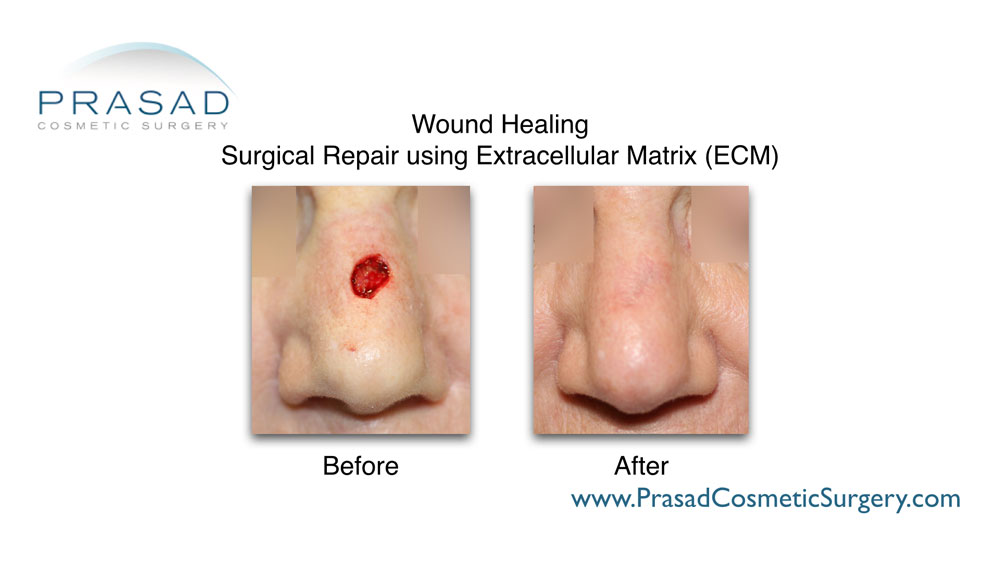
Before using acellular matrix as a hair loss treatment, Dr. Prasad used it primarily to improve healing of surgical incisions for facelifts, as well as regenerating lost facial tissue
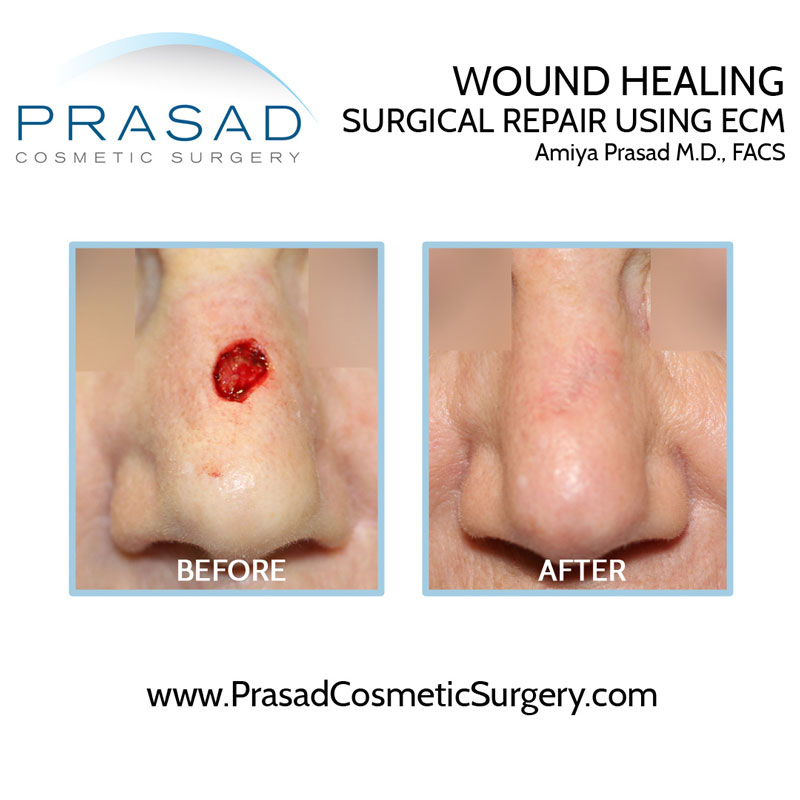
Before using acellular matrix as a hair loss treatment, Dr. Prasad used it primarily to improve healing of surgical incisions for facelifts, as well as regenerating lost facial tissue
We have also found acellular matrix to be particularly helpful in complex revision eyelid surgery. We often see many patients who have suffered from complications of eyelid surgery at the hands of other doctors, and one of the most common complications we address is lower eyelid retraction. Lower eyelid retraction occurs when patients have lost a significant amount of the delicate support tissue in their eyelid, resulting in it looking pulled down. To address this, we perform revision surgery using acellular dermis like Enduragen, skin grafts and tissue grafts, which we then support with the use of acellular matrix and PRP. The results continue to impress us to this day.
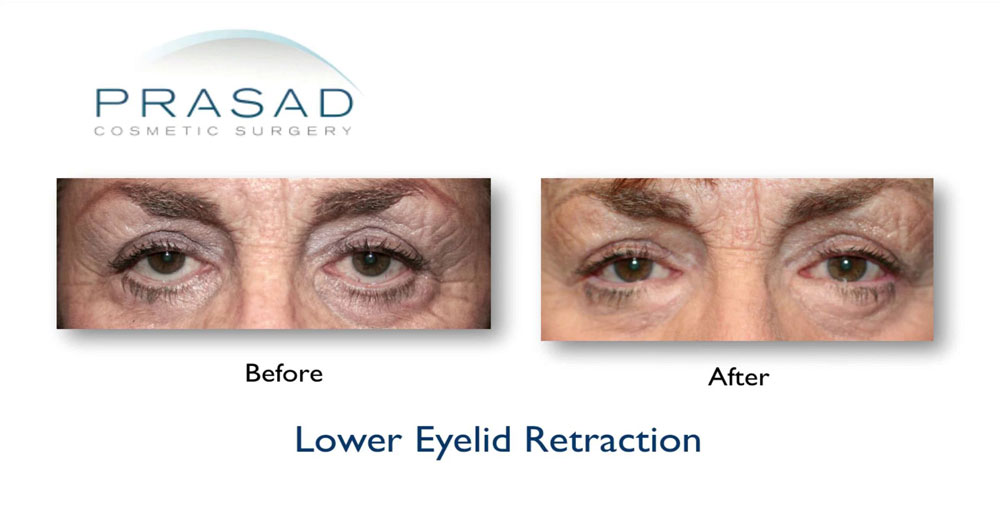
Acellular matrix helps address issues of tissue loss for lower eyelid retraction after eyelid surgery by working synergistically with tissue and skin grafts in revision surgery.
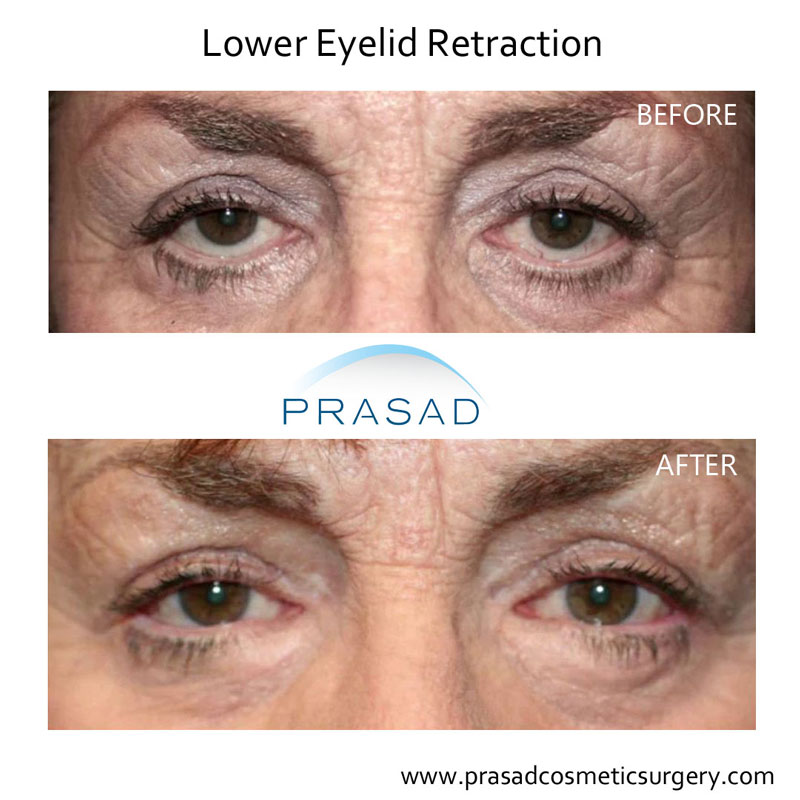
Acellular matrix helps address issues of tissue loss for lower eyelid retraction after eyelid surgery by working synergistically with tissue and skin grafts in revision surgery.
One of the First to Use ACell + PRP in Hair Transplants
In 2010, we began using acellular matrix and PRP as part of a hair loss treatment strategy. Its main purpose was to improve healing of the donor area from which hair grafts are typically harvested from a follicular unit transplantation (FUT) also known as the strip method. Hair grafts are harvested from an excised strip of skin at the back of the head, often leaving people with an obvious scar.
To help patients with such scarring, we applied a suspension of powder acellular matrix with PRP onto the donor area. It was a strategy that yielded very good results in most cases, allowing scars to heal better and faster, until they are almost imperceptible, even with the hair combed up.
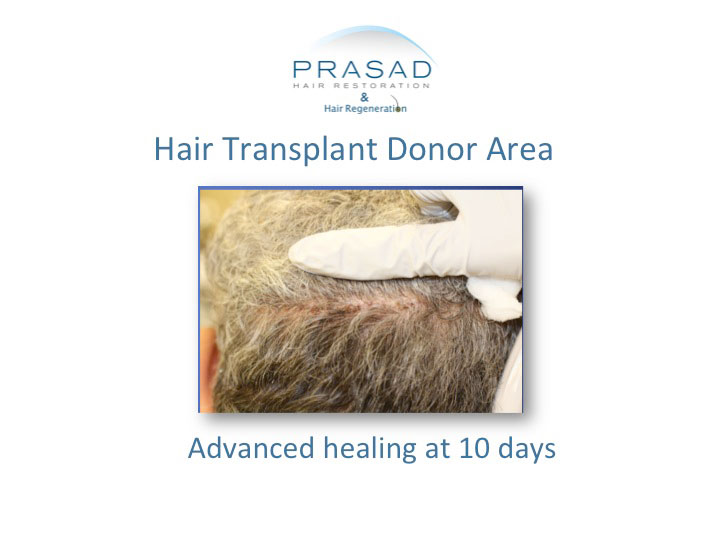
Successful result after using ACell to expedite healing of an FUT incision at the donor area at the back of the patient’s head, making it barely visible 10 days after transplant surgery
Aside from improving the appearance of the strip scar, we also wanted to improve the growth and survival rate of transplanted hair grafts. As much as 90% of hair grafts do not survive the transplantation process due to several factors. To improve healing and survival, we formulated a scalp injection composed of acellular matrix suspension and PRP. By administering the suspension into the transplanted areas, we were able to strengthen the hair grafts, allowing them to heal faster and increase graft survival.
The Development of ACell & PRP as a Standalone Hair Loss Treatment
A year after using acellular matrix and PRP on hair grafts, we discovered that in addition to improving graft survivability and the appearance of donor area scars, areas with no transplanted hair exhibited new growth and existing native hairs became thicker. This was a breakthrough moment, so we continued the refinement and development of a hair loss treatment that didn’t require surgery. This treatment would eventually come to be called Hair Regeneration, which was administered to patients starting in 2011. With Hair Regeneration’s continued and consistent success among our patients coming to New York, we then opened the first TrichoStem™ Hair Regeneration Center in Northern Virginia.
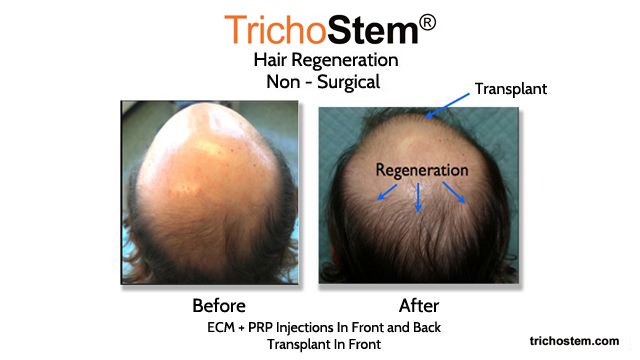
The original discovery of using ECM by ACell to help healing after a hair transplant, but also shows thinning hairs in non-transplant areas growing thicker.
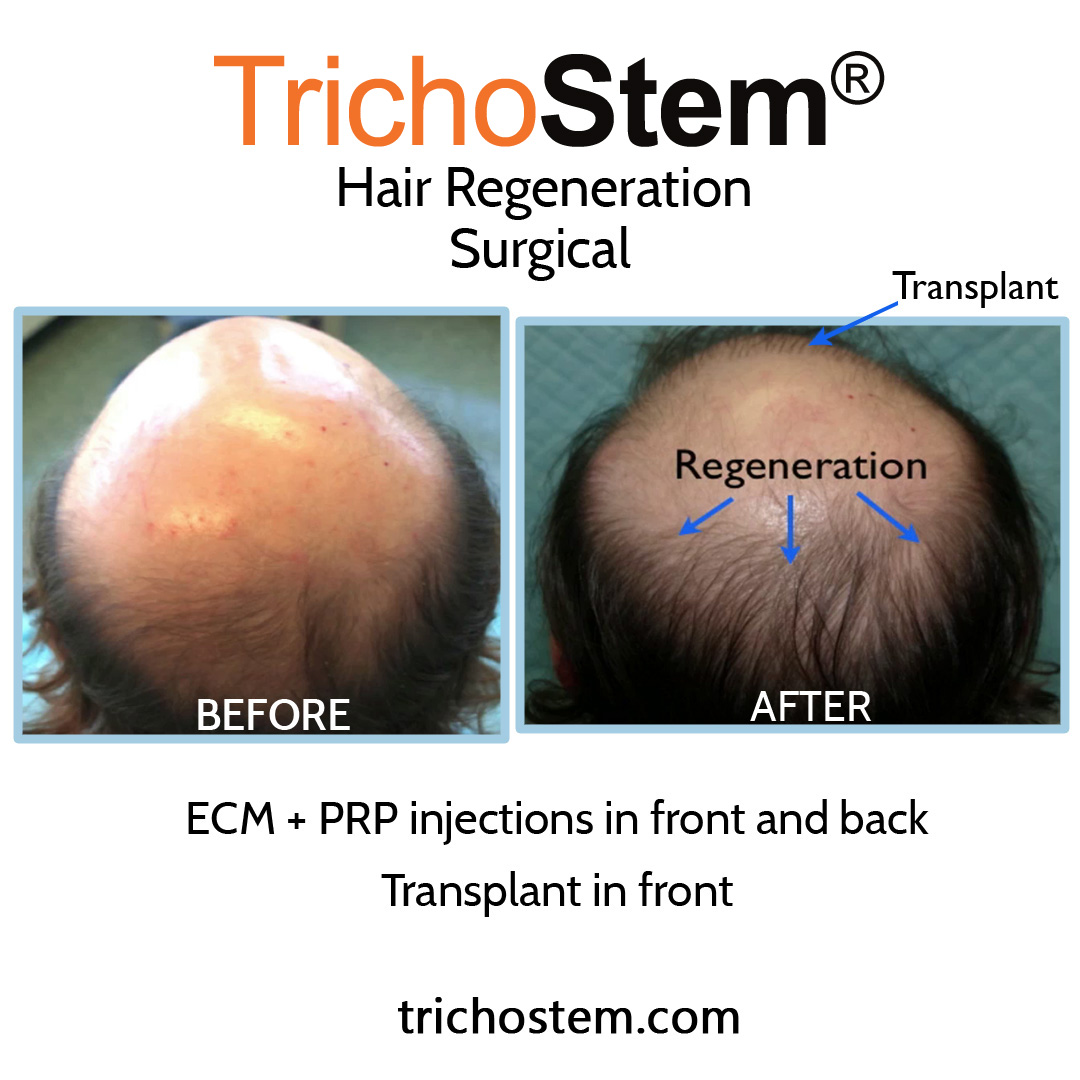
The original discovery of using ECM by ACell to help healing after a hair transplant, but also shows thinning hairs in non-transplant areas growing thicker.
To help with dosing for hair loss treatment, we made careful and lengthy observations of the tissue response to acellular matrix, supplemented by high-resolution medical photography and microscope photos. For each condition we identified in months of observation, we formulated specific protocols, which we further customized by factoring in important patient characteristics such as age, gender, and for hair loss, the age of onset, rate of progression and degree of hair loss.
As we began to streamline our Hair Regeneration™ treatment, we began to apply it on male patients with different types of hair loss. Two years after a single treatment, we observed improvements in hair thickness and scalp coverage in over 99% of our patients. One of the early challenges we faced was the consistency of results, which we were able to mitigate by refining our formulations for each individual patient, and improving our delivery methods.
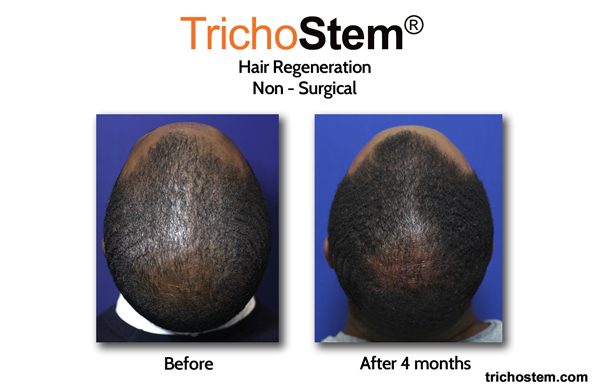
A male TrichoStem™ Hair Regeneration patient showing significant improvement after only 4 months and a single treatment session
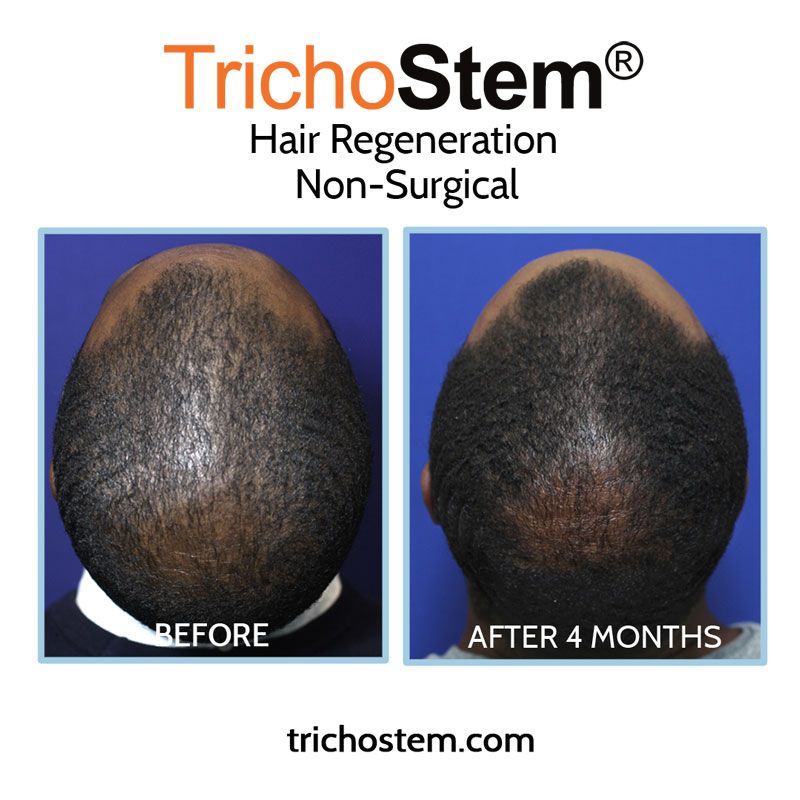
A male TrichoStem™ Hair Regeneration patient showing significant improvement after only 4 months and a single treatment session
Initially, the success rates of Hair Regeneration among male and female patients were not at par with each other, with female patients first showing only 70% success. This was mostly because there are more causes of hair loss and hair thinning in women such as various hormonal issues. However, when we began with better diagnosis of female of androgenetic alopecia or female pattern hair loss, we saw an improvement in the rate of successful treatment. With time and better diagnostics, we were able to achieve a similar 99% rate of success in female pattern hair loss patients.
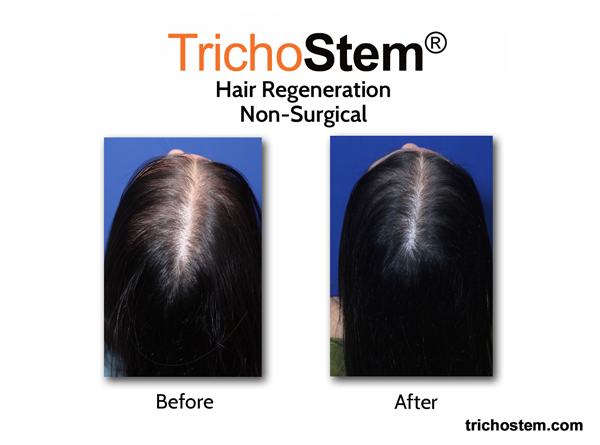
After improving our methodology of diagnosing female pattern hair loss, we were able to attain a 99% success rate with Hair Regeneration in women.
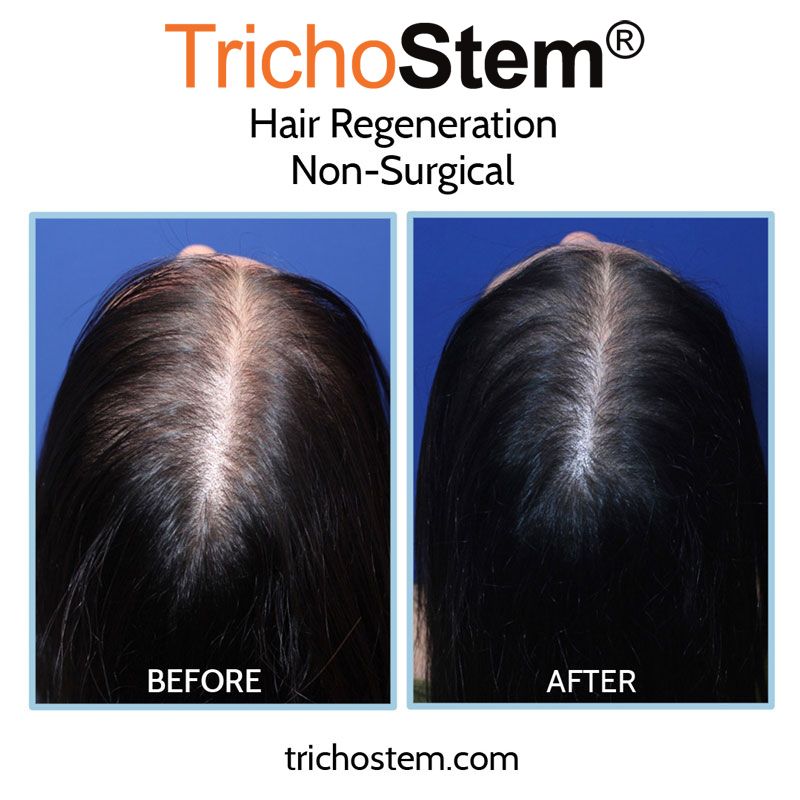
After improving our methodology of diagnosing female pattern hair loss, we were able to attain a 99% success rate with Hair Regeneration in women.
Long-term Results from a Single Treatment Session
After observing our results and monitoring our patient data over the proceeding years, we noted that in general, a single injection of Hair Regeneration™ could yield profound results that 3-5 years in most candidates.
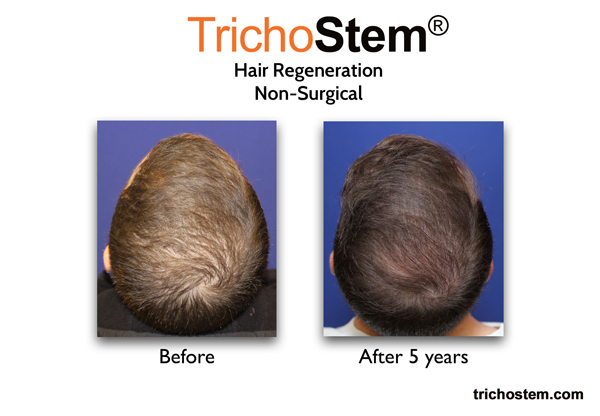
Five years after a single injection treatment of TrichoStem™ Hair Regeneration, a male patient is shown here with thicker scalp coverage and better hair density, and without using finasteride.
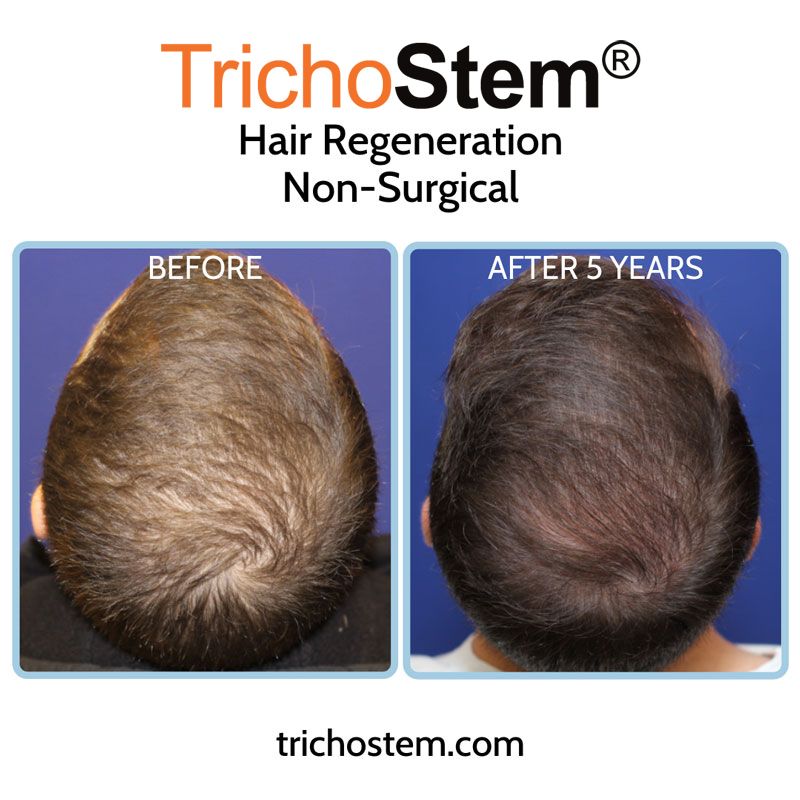
Five years after a single injection treatment of TrichoStem™ Hair Regeneration, a male patient is shown here with thicker scalp coverage and better hair density, and without using finasteride.
For patients with more advanced and aggressive hair loss, we saw the benefit in giving them a second injection. This is based on our observation that dormant hair follicles would actually produce fine hair regrowth 6 months after the initial Hair Regeneration™ injection. With this new information, we began scheduling second treatment sessions, or booster injections, at 15-24 months after the first injection for those who could benefit from it. As a result, the fine hair regrowth became thicker and gave patients better scalp coverage. The second booster injection is part of the TrichoStem™ Hair Regeneration treatment plan and is done at no further cost.
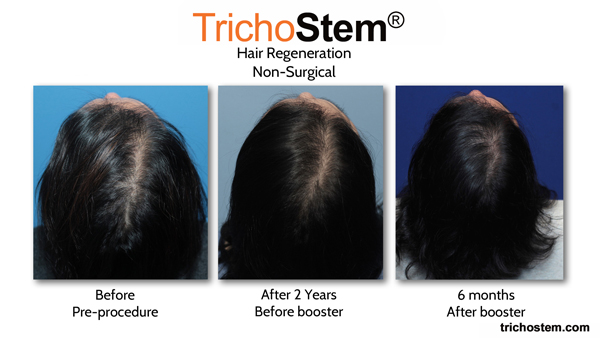
At no extra charge, a booster TrichoStem™ Hair Regeneration treatment can be administered 15-24 months after the initial treatment to thicken fine hair growth stimulated by the first treatment
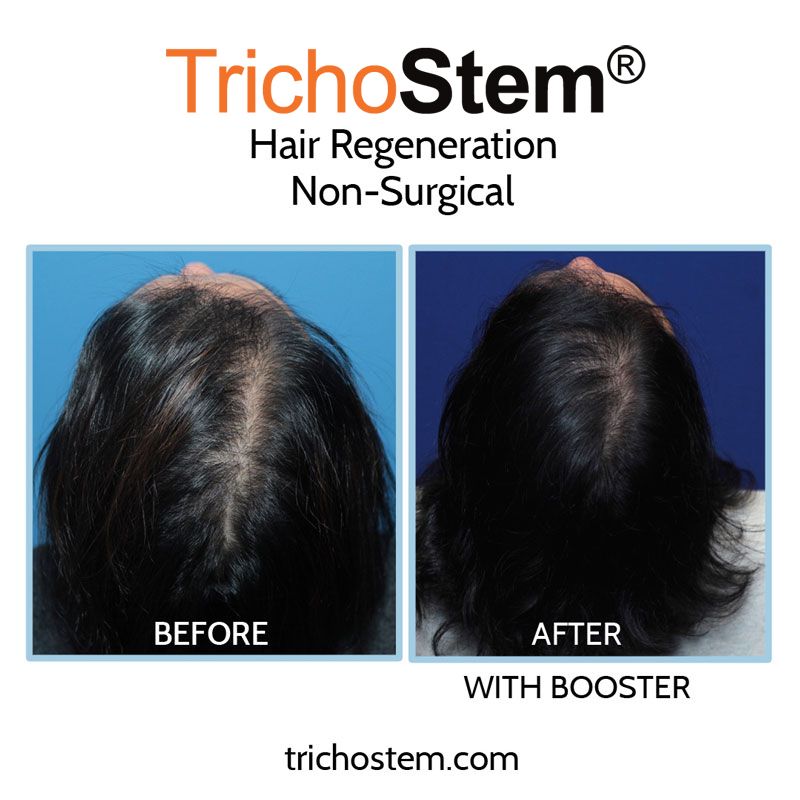
At no extra charge, a booster TrichoStem™ Hair Regeneration treatment can be administered 15-24 months after the initial treatment to thicken fine hair growth stimulated by the first treatment
Hair Regeneration™ Treatment for Young Male Patients
In the early years of Hair Regeneration™, we were mostly treating middle-aged men and women for pattern hair loss. As the success of our treatment gained more attention online and through word of mouth, we began seeing more and more young male patients in our practice. Many of these young men often exhibited aggressive and early onset hair loss, and wanted to undergo Hair Regeneration™ treatment as an alternative to finasteride. Finasteride is linked to negative sexual side effects in men, so many wanted to avoid this.
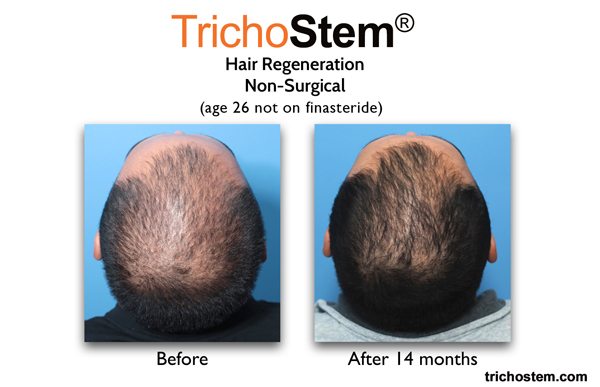
Although we have achieved impressive results with TrichoStem Hair Regeneration on some young men not on finasteride, finasteride is part of the standard treatment plan for best and lasting results
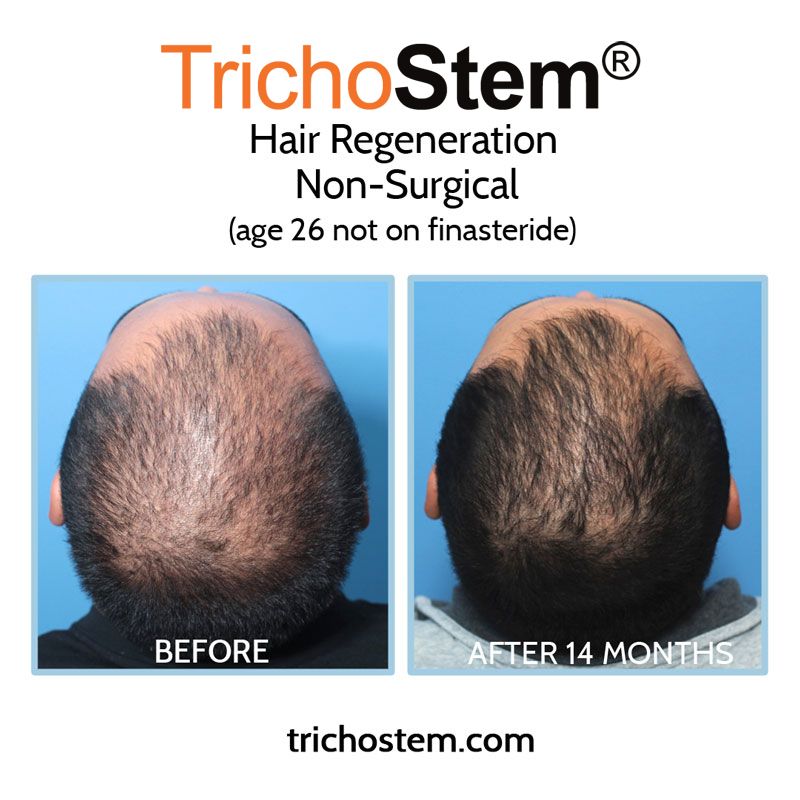
Although we have achieved impressive results with TrichoStem Hair Regeneration on some young men not on finasteride, finasteride is part of the standard treatment plan for best and lasting results
Despite our success with some young male patients who were not taking finasteride, we observed that our treatment was still not yielding the same amount of coverage and longevity of results as seen in our older patients. We realized that DHT-sensitivity, or dihydrotestosterone needed to be factored into the treatment plan as well. DHT-sensitivity is largely responsible for the miniaturization of hair follicles which ultimately leads to hair loss. The extent of hair loss in each individual depends on how sensitive they are to DHT. Men who experience hair loss much later in their lives are considered to be less sensitive to DHT, compared to those who suffer hair loss much earlier and quicker due to high DHT-sensitivity.
As a result, we began to incorporate finasteride into our treatment protocol for young male patients in particular, in order to get the most out of the TrichoStem™ Hair Regeneration treatment. The actual risk of side effects due to finasteride is exceedingly rare, with chances of about 2% among men using it. In our practice prescribing finasteride since
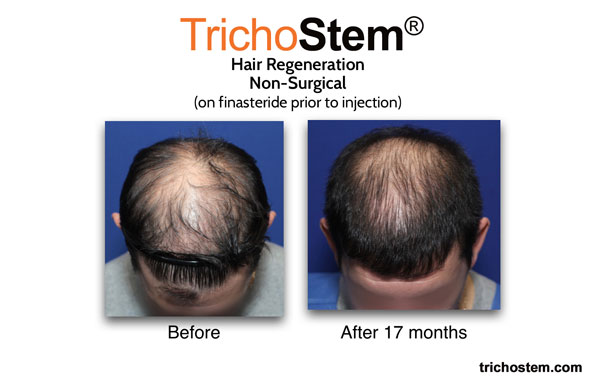
TrichoStem™ Hair Regeneration works best with a DHT-blocker like finasteride, especially for young men with high DHT-sensitivity, and can achieve more scalp coverage than finasteride alone
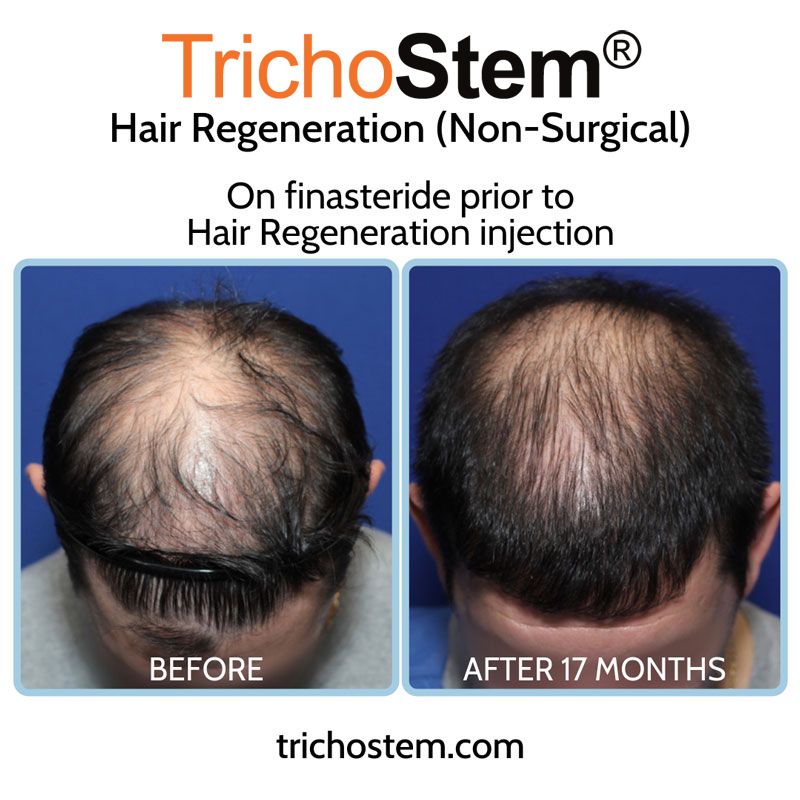
TrichoStem™ Hair Regeneration works best with a DHT-blocker like finasteride, especially for young men with high DHT-sensitivity, and can achieve more scalp coverage than finasteride alone
TrichoStem™ Replacing Other Hair Loss Treatments
Minoxidil is another popular treatment for hair loss in men and women, though many complain of scalp irritation after regular use. Spironolactone is also sometimes prescribed to women and works by blocking testosterone. We find that our patients no longer need minoxidil or spironolactone since the TrichoStem™ Hair Regeneration alone is more effective at treating pattern hair loss in men and women. While some patients stop minoxidil immediately or soon after the TrichoStem Hair Regeneration treatment, some are gradually weaned off minoxidil to prevent a sudden hair shed.
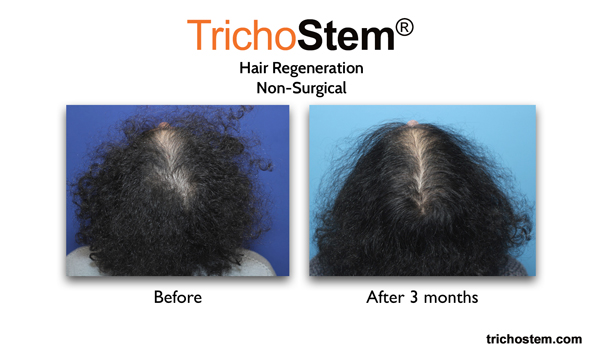
Minoxidil for men and women, and spironolactone for women are no longer needed for all TrichoStem™ Hair Regeneration patients

Minoxidil for men and women, and spironolactone for women are no longer needed for all TrichoStem™ Hair Regeneration patients
Customized Hair Loss Treatment for Every Individual
What sets TrichoStem Hair Regeneration apart from other ACell PRP treatments besides our longer experience, is that we believe that every patient will benefit from a customized formulation that factors their hair loss conditions, because no two hair loss cases are exactly alike. Unlike many other practices that offer a one-size-fits-all approach to treatment, we have been constantly developing and refining our own algorithm since 2011, based on factors such as: gender, age of onset of hair loss, degree of hair loss, previous hair loss procedures (like transplantation), and existing hair loss medications (like finasteride).
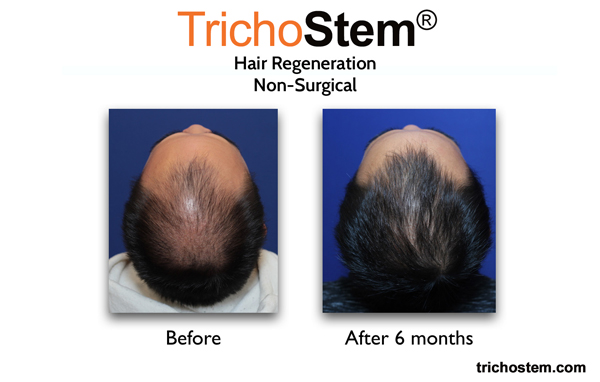
Different characteristics of hair loss are factored when customizing TrichoStem™ Hair Regeneration for each patient.
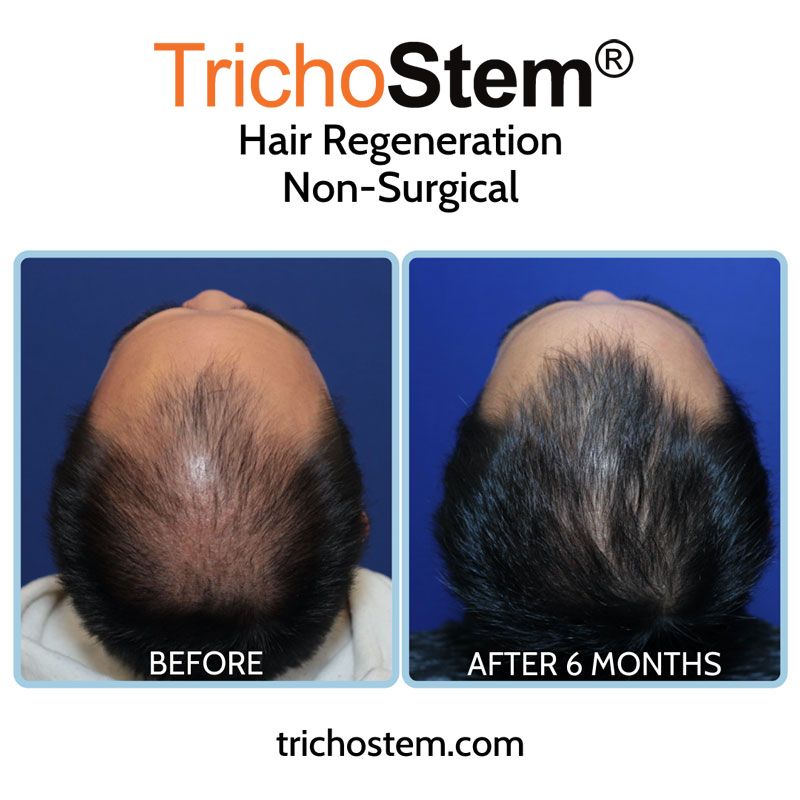
Different characteristics of hair loss are factored when customizing TrichoStem™ Hair Regeneration for each patient.
The Most Extensive Experience with ACell + PRP
As pioneers of the ACell + PRP treatment, we play an important role in helping patients from all over the world manage their hair loss. Great care and detail is put into every case, with each patient evaluated with the highest standards, using high-resolution digital photographs and microscope photos.
In our practice, we provide a full treatment plan which we will discuss with you. After the initial treatment, we will see you every three to six months for the next 2 years in order to examine your progress and monitor your results. It is a long-term commitment on our part. We value your time, and if we do not think you will be a good candidate for the treatment, we will tell you.
You can reach us in our Manhattan, New York City office at (212) 265-8877, Garden City, Long Island office at (516) 742-4636, or Vienna, Virginia office at (703) 356-1336. You can also reach us by filling out the contact form on our website, and we’ll follow up with you as soon as possible.
